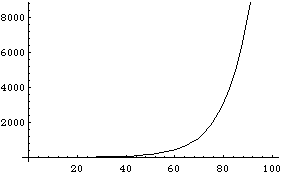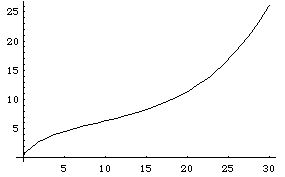
Fig. 13.

Fig. 14.
An F4 model universe, spacetime M Å S3 x R+ , evolves according to the cosmology of Gunzig, Géhéniau, and Prigogine58 and the quantum conformal fluctuation cosmology Narlikar and Padmanabhan57. During the inflationary stage of the F4 model universe black holes would be formed, taking energy from the L vacuum. The black holes would then decay by Hawking radiation, creating matter with the present matter-antimatter asymmetry being due to CP violation of black hole Hawking radiation as described by Turner59 and Dolgov60. (Perhaps Planck-mass black holes would remain as a stable residue, but they would be difficult to detect.)
As to how much of the L vacuum energy would be converted to matter by black hole formation, consider the full quantum fluctuation term
If the factor (1/l2) is considered to set the scale of the
(1/16¹G) º `Rab /\ `Rcd eabcd part, then the (1/64) factor is the ratio of the quantum fluctuation first term to the vacuum cosmological constant third term, and 1/64 of the L vacuum energy (totalling Ã(5/4) of the critical density) should be converted into matter.
The resulting Friedman equation is calculated as follows, as a Mathematica notebook:

Fig. 13.

Fig. 14.
The resulting graphs of R[t] (in 10^9 light years) versus t (in 10^9 years) are consistent with a universe about 30 x 10^9 years old and a Hubble constant H0 = 90 km/(sec x Mpc), and in particular are consistent with the measurements of Hoell and Priester61 of Lyman-a clouds from redshifts 2.17 to 4.43 and requiring that the model give a homogeneous void structure with voids the same size as observed at small redshifts (z < 0.04).
At age about 80 x 10^9 years, our curvature-dominated universe should resume exponential expansion, perhaps then giving birth to new quantum fluctuation baby universes.